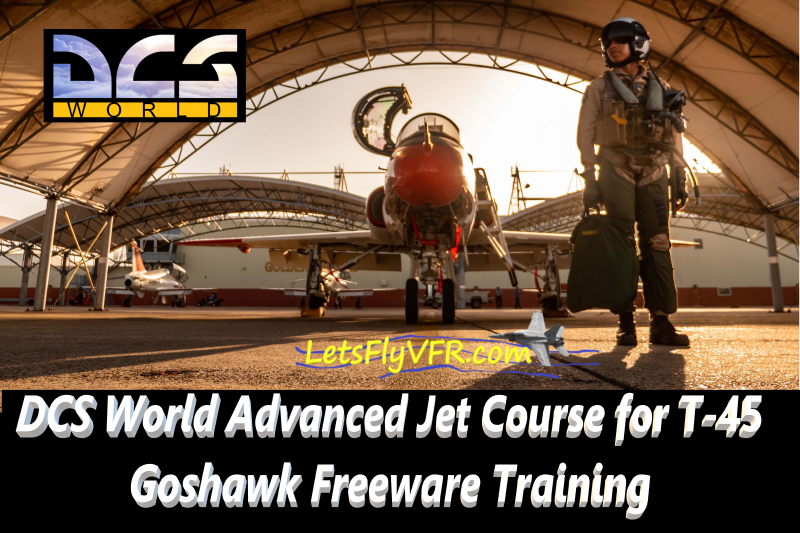DCS World Advanced Jet Course for T-45 Goshawk Freeware Training.
Course Overview
This course is designed for pilots transitioning from propeller trainers to fast jets in DCS World. If you have already completed the BASIC PILOT COURSE then the next step up to the T-45 Goshawk.
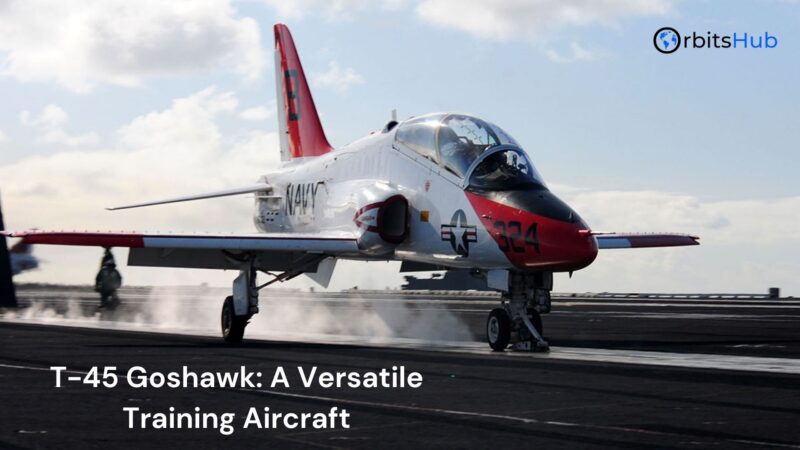
The T-45 Goshawk, is a fully-featured freeware jet trainer, students will learn advanced flight manoeuvres, jet handling, and combat basics. The course emphasizes real-world aviation procedures while remaining beginner-friendly for virtual jet pilots.
Target Audience:
- Pilots with propeller aircraft experience (e.g., Super Tucano)
- Aspiring fast-jet DCS World enthusiasts
- Players preparing for their first high-performance jet experience.
Checklists.
Start-Up, Taxi & Takeoff Checklist – T-45 Goshawk
V-Speeds & AoA Guidelines – T-45 Goshawk
| Speed Type | Typical Value (KTAS) | Notes / Disclaimers |
|---|---|---|
| VR (Rotate) | ~125 | Approximate, simulator only, adjust per weight |
| VY (Best Rate of Climb) | 180 | Use during initial climb to safe altitude |
| VX (Best Angle of Climb) | 160 | For obstacle clearance |
| VAPP (Approach) | 135-140 | Depends on flap configuration |
| VLAND (Landing) | 120-130 | Adjust for weight and wind |
| VSTALL CLEAN | ~105 | AoA indicator critical |
| VSTALL FLAPS | ~95 | AoA limit applies |
| MAX AoA (Takeoff / Landing) | 16-18° | Avoid exceeding to prevent tailstrike / wing stall |
| MAX AoA (Maneuvering) | 20° | Only in training patterns, never at low altitude |
| MAX G | +7 / -3 | Simulator limits, obey aircraft restrictions |
Disclaimer: Speeds and limits are for DCS World simulator use only. Adjust for weight, configuration, and environmental factors in-game.
Disclaimer: These speeds are DCS World simulation approximations for the T-45 Goshawk freeware mod. Do not use for real-life operations. Adjust speeds based on weight, configuration, and environmental factors in-game.
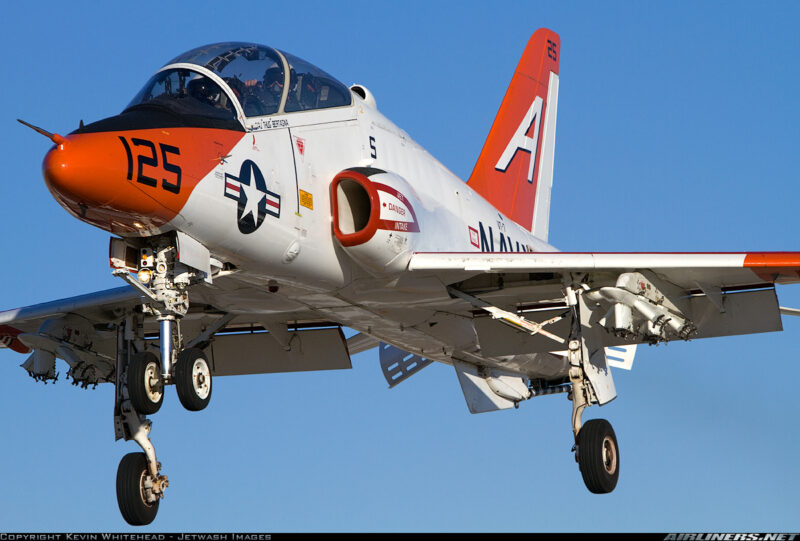
1. Mission Breakdown (Advanced Jet Syllabus)
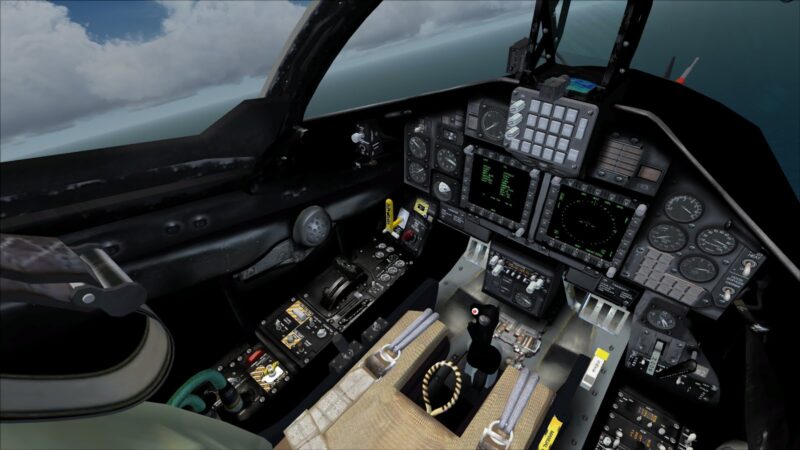
Mission 1: Jet Familiarization & Handling
- Objectives:
- Startup, taxi, and takeoff practice
- Basic climb, descent, and turns
- Gear and flap operations
- Focus: Smooth throttle control, AoA awareness
CAUTION:
The T-45 Goshawk is a great aircraft to fly in DCS WORLD and it has some of its real world issues. Be careful pulling lots of AOA as the aircraft as you will suffer from adverse yaw issues and stall the high wing rolling you in the opposite direction. This is truly hazardous at low level so if your tuning close to the ground be careful.
Mission 2: Instrument Navigation
- Objectives:
- Straight-and-level instrument flight
- Practice holding patterns
- Basic IFR navigation with T-45 avionics
- Focus: Cockpit scan, instrument interpretation
Absolutely! Here’s a concise explanation tailored for the T-45 Goshawk in DCS World:
Instrument Navigation in the T-45 Goshawk
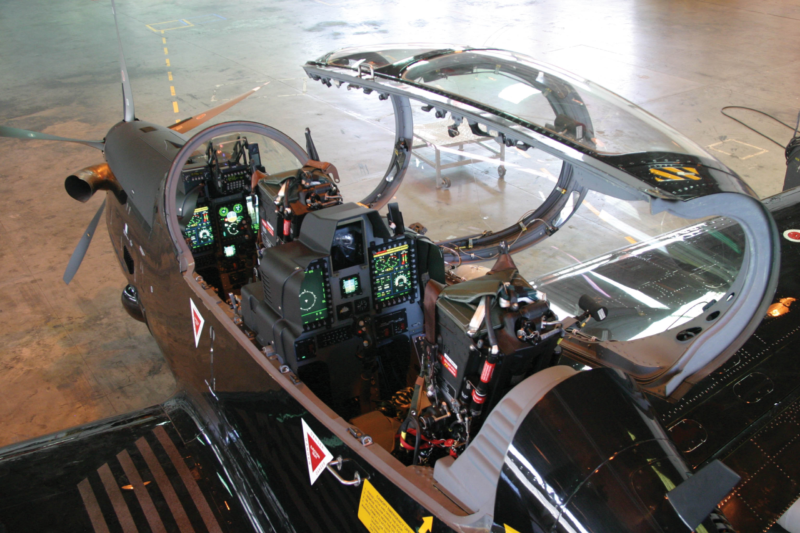
Instrument navigation is the process of flying the aircraft primarily by reference to the cockpit instruments rather than outside visual cues. This is crucial for low-visibility conditions, night flying, or when practicing advanced jet procedures.
Key Elements in the T-45 Goshawk:
- Attitude Indicator (Artificial Horizon):
- Shows aircraft pitch and bank.
- Primary reference for maintaining level flight or controlled turns.
- Heading Indicator / HSI (Horizontal Situation Indicator):
- Displays aircraft heading and navigation course.
- Can be linked to waypoints or a selected navigation radio frequency.
- Airspeed, Altimeter, and Vertical Speed Indicator (VSI):
- Airspeed: Maintain desired climb, cruise, or approach speed.
- Altimeter: Maintain assigned altitude.
- VSI: Monitor rate of climb or descent.
- Navigation Radios (VOR, TACAN, ILS in DCS World):
- Used to fly to radio beacons or follow approach paths.
- Essential for practicing instrument approaches like ILS landings.
- Flight Director / FMS (if installed in mod):
- Provides guidance bars for heading, altitude, and vertical path.
- Helps maintain course when hand-flying.
Basic Instrument Navigation Techniques:
- Fly straight and level using attitude indicator and altimeter.
- Perform standard turns with heading indicator and bank references.
- Use airspeed and VSI to control climb or descent.
- Follow navigation radios to reach waypoints or airfields.
Training Focus in DCS World:
- Smooth instrument scanning to avoid fixating on one instrument.
- Precision altitude and heading control.
- Preparing for advanced jet operations, including low-visibility or night missions.
Solo Instrument Navigation – T-45 Goshawk
Note: This checklist is designed for DCS World simulator use and the T-45 Goshawk freeware mod only.
Mission 3: Low-Speed Manoeuvring & Pattern Work

- Objectives:
- Takeoff and landing patterns
- Slow-speed turns and stalls
- Touch-and-go practice
- Focus: AoA control, flap and gear management
Crucial in all aircraft being comfortable with the T-45 Goshawk in slow flight both fighting in BDM as well as in the pattern and landing is a life saving skill.
Mission 4: High-Speed Manoeuvring
- Objectives:
- Accelerated turns
- High-speed climbs and descents
- Basic formation flying with AI wingman
- Focus: G-awareness, energy management
Ensure you do your G Warmup even in DCS WORLD. A gentle 4-5G turn over 180 degrees and if all is ok then a 5-6G pull back to where you came. This should be done even in DCS WORLD as your G tolerance in sim will be low and you can black out if not done!
Setup another Jet trainers as an adversary and change their locations from abeam you to behind you and manoeuvre to stay alive.
Mission 5: Carrier/Short-Field Operations (Optional)
- Objectives:
- Simulate carrier approaches or short-field landings
- Precision landing practice
- Arrestor wire / short runway ops (if using maps/mods)
- Focus: Precision AoA control, landing accuracy
Deciding to do the carrier operations is great especially of your a Hornet Driver. In this you can become comfortable with all the ground handling if you have the DCS WORLD SUPER CARRIER MODULE with its animated ground crews. They marshal you around to parking as well as getting you to your catapult for take off safely. Its quite a lot of fun and challenging.
Carrier operations are quite the challenge in day and even more so at night. To consider yourself carrier qualified you need to to SIX take offs as well as SIX landings in both DAY and Night Operations.
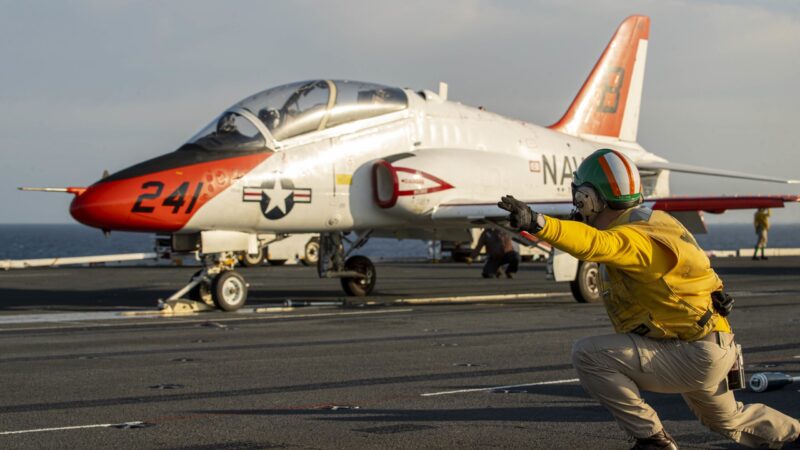
Mission 6: Advanced Pattern & Emergency Procedures
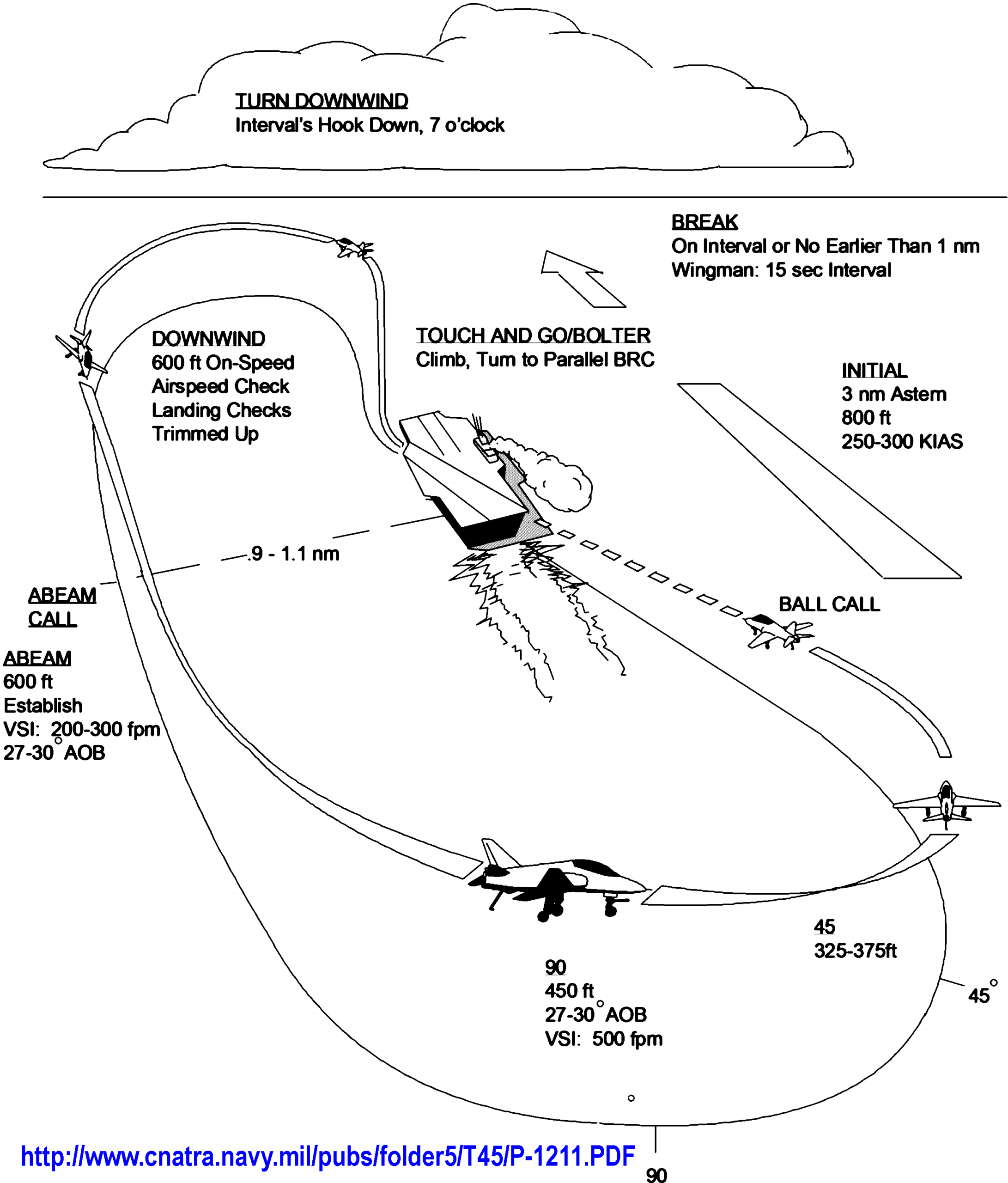
- Objectives:
- Engine failure drills
- Rejected takeoffs
- Go-around procedures
- Focus: Decision-making under pressure
BFM Syllabus.
Absolutely! In the Advanced Jet Course phase, once a student has mastered startup, takeoff, instrument navigation, and basic jet handling, the next step is Basic Fighter Maneuvers (BFM). This is essentially dogfighting fundamentals in a simulator like DCS World. Here’s a structured breakdown tailored for a T-45 Goshawk course:
7. Normal BFM Syllabus – Advanced Jet Phase (T-45 Goshawk)
Objective:
Introduce pilots to air combat maneuvering, energy management, and situational awareness in a fast jet environment. Emphasis is on learning maneuvers safely, avoiding overstressing the aircraft, and building confidence before moving to live combat simulations.
1. Energy Management & Aircraft Awareness
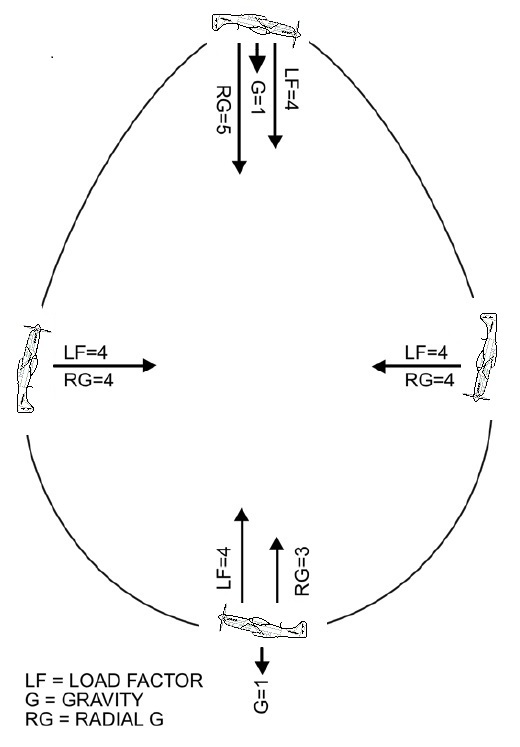
- Topics Covered:
- Understanding kinetic vs potential energy
- Throttle management and G-awareness
- Effects of altitude and airspeed on maneuvering
- Training Goals:
- Maintain energy advantage over opponent
- Avoid overspeed or stalling during tight turns
- Recognize when to disengage
The Energy Egg is a common concept for new pilots to understand. Dogfighting or BFM in any form is not a flat circle. Its a three dimensional exercise knowing how much speed you need to be able to look and when you should. Knowing a turn can be much tighter using gravity to help you turn is why vertical manoeuvres can be super effective in BFM practice.
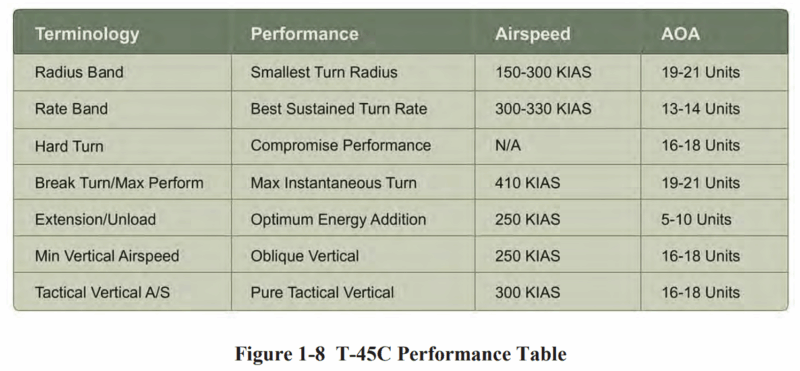
You can see the fighter needs more time and distance at the bottom with gravity resisting the climb where the tip gravity pulls the nose of the fighter down much faster.
2. Basic Turning Engagements
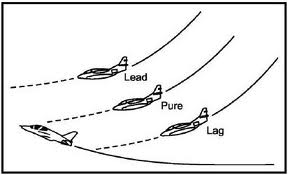
- Topics Covered:
- Visual acquisition of opponent
- Nose-to-tail tracking
- Sustained turns vs rolling scissors
- Training Goals:
- Maintain lead pursuit without losing energy
- Execute clean turns without exceeding G or AoA limits
- Recover to neutral when overshooting
- Knowing when to attack and pull your nose onto an adversary is what you learn in these basic flights. Keeping the adversary in the assessment window so as to maintain energy is a skill you must learn early.
- Keeping in the same plane as your adversary is also an important factor in your ability to fight the adversary fighter. IE, Flying the same plane as they are when manoeuvring. If they are flying a flat circle then so do you unless you see an opportunity to cut the corner or if they lose sight go vertical to come back down on top of them.
- Knowing your left vector i.e. the vertical line coming from the floor of the aircraft up through your helmet. In a slow scissors you want to keep this line behind your opponent as you try to get behind the other fighter.
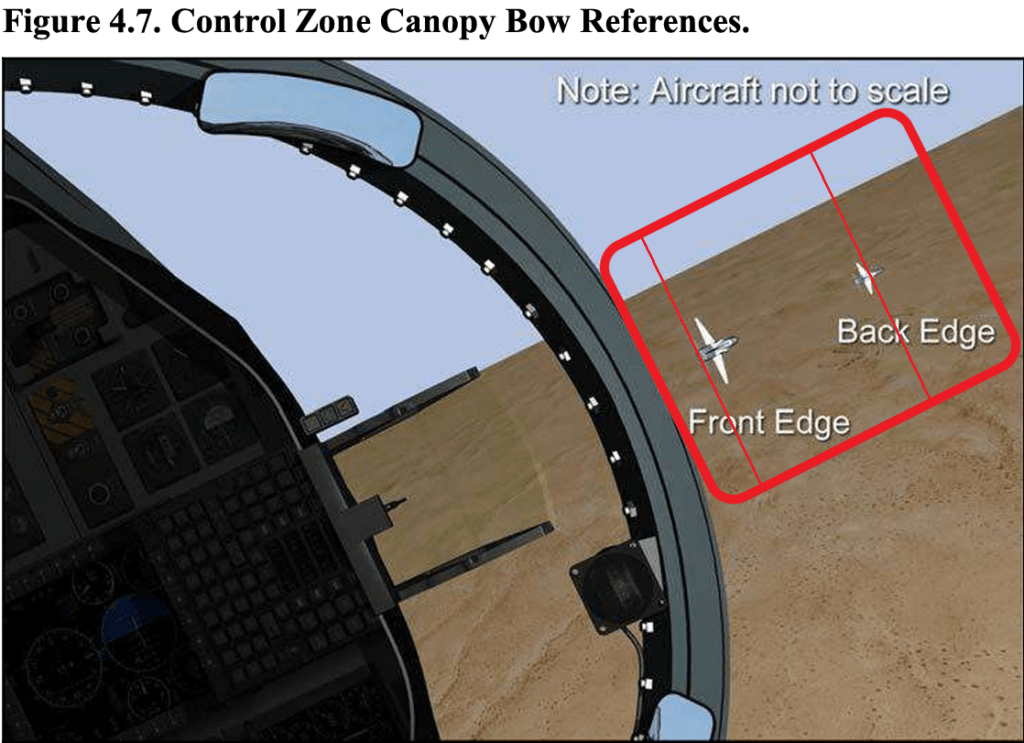
3. Defensive Manoeuvres
- Topics Covered:
- Break turn / hard turn to evade
- High Yo-Yo / Low Yo-Yo techniques
- Split-S recovery
- Training Goals:
- Avoid being “in the sights” of an opponent
- Practice safe escape manoeuvres
- Recover to safe airspeed and altitude
These tactics and Manoeuvres need to be practiced with an opponent with setups from:
- The classic head on passes (i.e. the merge)
- Parallel start points then turn in (i.e. The Butterfly set)
- The defensive set where the enemy is already behind you and you have to survive.
These are the classic dogfighting scenarios you can use to practice and imporve your skills.
4. Offensive Manoeuvres
- Topics Covered:
- Lead pursuit for attack
- Lag pursuit for energy conservation
- Guns-only engagements
- Training Goals:
- Close on opponent safely
- Maintain proper firing solution
- Transition to disengage when energy runs low
Offensive is as much about energy management and maintaining correct range. The enemy fighter will try to bring you close by manoeuvring and reducing speed hoping to trick you into flying past them so you are then the defender. Rolling Scissors is used here often and placing that lift vector behind the enemy jet will help you stay in control.
5. One-on-One Simulated Engagements
- Activities:
- 1v1 AI or teammate dogfights
- Focus on applying energy, defensive, and offensive techniques
- Debrief after each engagement
- Training Goals:
- Improve visual scanning and situational awareness
- Learn tactical positioning and timing
- Build confidence for more complex scenarios
These are the most fun so starting with the setups previously mentioned you can have a ball as well as learn a lot. Great to fly against a friend in multiplayer servers.
6. Advanced Topics (Optional / Later Phase)
- High-speed vertical manoeuvres
- Advanced defensive manoeuvres (Immelmann, Split-S, Barrel Roll attack)
- Lead turns with energy trade offs.
Here you need to be aware of your energy state at all times and while dogfighting in BFM situations keep your eyes glued on your opponent. Often a lot easier said than done but “LOSE SIGHT – LOSE THE FIGHT” is the age old adage.
Key Notes for T-45 Goshawk in DCS World:
- Aircraft is a trainer jet, so BFM is safe for learning but pay attention to AoA limits (~20°) and G limits (+7 / -3).
- Keep manoeuvres simple and smooth before attempting high-speed engagements.
- Focus is on technique and energy awareness, not high-performance combat.
Basic Fighter Manoeuvre Techniques Breakdown!
When manoeuvring in a fighter aircraft, pilots are taught to manage energy and G-forces carefully to maintain control and situational awareness:
- Neutralize G During Roll
- Pilots avoid rolling the aircraft while holding high G-loads.
- Before rolling (banking left or right), they neutralize the G, letting the aircraft relieve stress on the airframe and themselves.
- Roll, Then Pull
- Once the roll is complete, pilots smoothly apply G with the stick to enter the desired turn.
- This ensures maximum energy efficiency, prevents overstressing the aircraft, and maintains controlled manoeuvring.
- Energy Management
- Turns, climbs, and descents are carefully coordinated to preserve airspeed and altitude.
- Maintaining an energy advantage over the opponent is often more important than tight, high-G manoeuvres.
- Situational Awareness
- Pilots continuously scan for threats while manoeuvring.
- Smooth inputs, rather than abrupt movements, help avoid disorientation and maintain tactical advantage.
Summary:
Fighter pilots roll first, pull later to combine precision, energy efficiency, and safety. This technique is a cornerstone of basic fighter manoeuvres (BFM) and teaches pilots how to maximize aircraft performance while minimizing the risk of stalls, spins, or excessive G-loading.
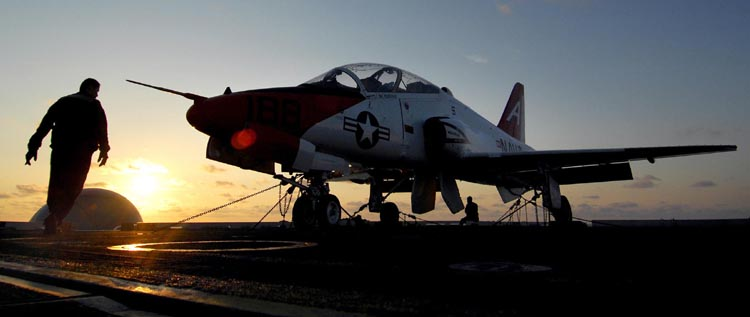
Pass or Fail – Jet Phase?
Ok, theres a lot we have done in this Advanced Jet Course so lets take stock and take the big question? PASS OR FAIL!
Here’s a checklist for you to determine your abilities, where you should refly previous hops and get the clean bill of health before the big POSTING Show to your next JET!
T-45 Goshawk Advanced Training Phase – Pass / Fail Checklist
Note: This checklist is intended for DCS World T-45 Goshawk Advanced Training Phase. Pass/fail is determined by safe and competent completion of each task within simulator parameters.
Conclusion.
I very much hope the two Training scenarios have been both educational and enjoyable with firstly the Super Tucano basic flight training and now the Advanced Jet Phase of your DCS WORLD training.
Having been in the military and seen pilots go through flight training its pretty important to get it perfect. Once you leave your training and head to your squadron there it will begin again on your operational jet.
Good Luck and clear skies to you all!
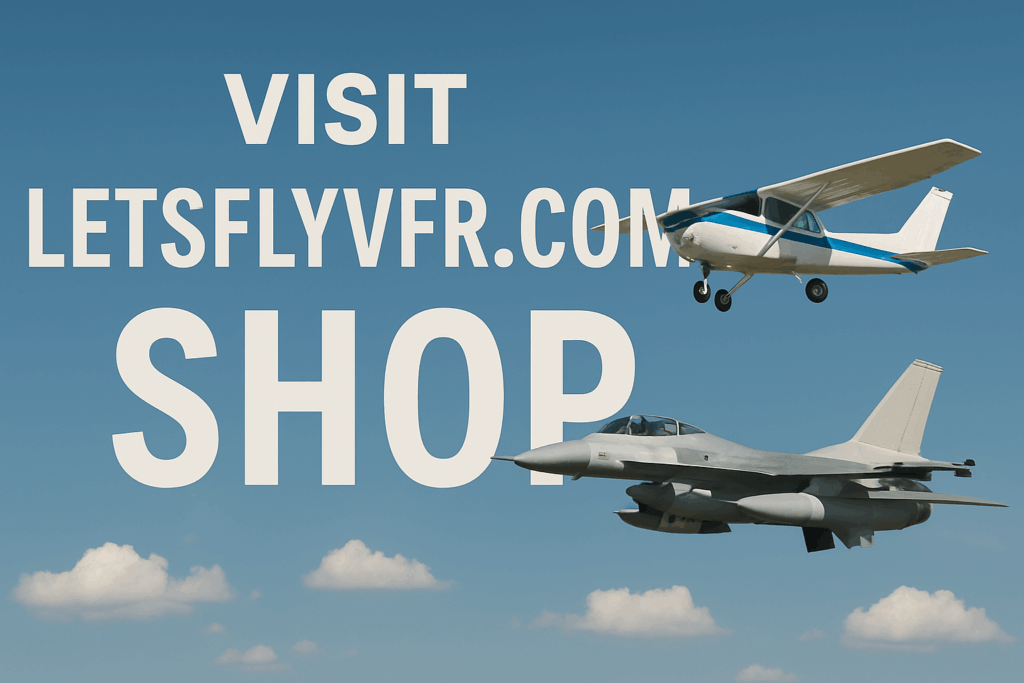
Author

Brendon McAliece (Aka Gunnie) is a military veteran with 23 years working on Jet Fighters, their weapons systems and ejection seat/module systems as well as munitions and R&D. Involved with flight simulation since the 1980s, he has flown all the major flight simulators over the years.
He is an Australian expat who has lived in Malaysia, UK, Saudi Arabia and more recently Thailand. He is a multi-lingual blogger who loves to share his life experiences here on LetsFlyVFR.com and DreamingGuitar.com, with his lifestyle and Travel experiences Blog plus his Dreaming Coffee website.
Learn More @
DreamingGuitar.com – DreamingCoffee.com – LetsFlyVFR.com
( HOME – BLOG – SHOP – ABOUT )
Enhance Your DCS BFM Skills
As an Amazon Affiliate I may earn on qualifying sales.
